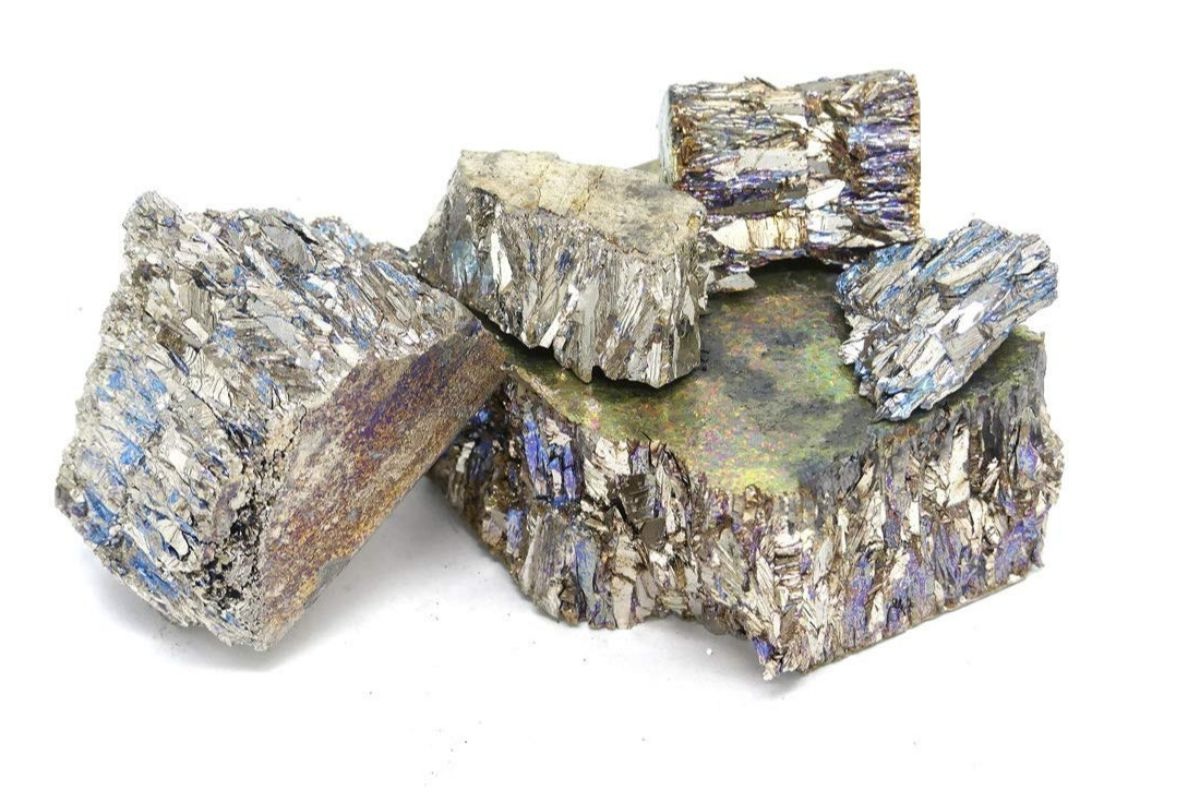
Bismuth(III) sulfide is a fascinating compound with a unique set of properties and uses. Known for its striking black color and metallic luster, this compound has intrigued scientists and hobbyists alike. Bismuth(III) sulfide is often used in the production of semiconductors, thermoelectric materials, and even cosmetics. Its chemical formula, Bi2S3, indicates that it consists of two bismuth atoms and three sulfur atoms. This compound is not only interesting for its practical applications but also for its role in various chemical reactions and processes. Whether you're a chemistry enthusiast or just curious about the elements, bismuth(III) sulfide offers a wealth of intriguing facts and insights. Let's dive into 30 fascinating facts about this remarkable compound!
Key Takeaways:
- Bismuth(III) sulfide, or bismuth trisulfide, has unique properties and potential uses in technology, but it's also relatively safe and stable, making it an intriguing compound for future sustainable technologies.
- With its ability to convert heat into electricity and potential applications in solar cells and medical imaging, bismuth(III) sulfide holds promise for the future of energy storage, healthcare, and green technologies.
What is Bismuth(III) Sulfide?
Bismuth(III) sulfide, also known as bismuth trisulfide, is a chemical compound with the formula Bi2S3. This compound is known for its unique properties and applications in various fields. Let's dive into some fascinating facts about this intriguing substance.
-
Chemical Formula: The chemical formula for bismuth(III) sulfide is Bi2S3.
-
Appearance: Bismuth(III) sulfide typically appears as a grayish-black crystalline solid.
-
Molecular Weight: The molecular weight of Bi2S3 is approximately 514.15 g/mol.
-
Melting Point: This compound has a melting point of around 685°C (1265°F).
-
Solubility: Bismuth(III) sulfide is insoluble in water but can dissolve in nitric acid.
Historical Background
Understanding the history of bismuth(III) sulfide can provide context for its current applications and significance.
-
Discovery: Bismuth compounds have been known since ancient times, but the specific identification of bismuth(III) sulfide came much later.
-
Early Uses: Historically, bismuth compounds were used in cosmetics and medicinal preparations.
-
Modern Applications: Today, bismuth(III) sulfide is used in various industrial and technological applications.
Physical Properties
The physical properties of bismuth(III) sulfide make it a unique compound with specific uses.
-
Crystal Structure: Bi2S3 has an orthorhombic crystal structure.
-
Density: The density of bismuth(III) sulfide is approximately 6.78 g/cm³.
-
Hardness: This compound is relatively soft, with a Mohs hardness of around 2-2.5.
-
Electrical Conductivity: Bismuth(III) sulfide exhibits semiconducting properties.
Chemical Properties
The chemical properties of bismuth(III) sulfide are essential for its reactivity and applications.
-
Stability: Bi2S3 is stable under normal conditions but can decompose at high temperatures.
-
Reactivity with Acids: It reacts with strong acids, such as nitric acid, to form bismuth nitrate and hydrogen sulfide gas.
-
Oxidation: Bismuth(III) sulfide can be oxidized to form bismuth oxide and sulfur dioxide.
Applications in Technology
Bismuth(III) sulfide has found its way into various technological applications due to its unique properties.
-
Thermoelectric Materials: Bi2S3 is used in thermoelectric materials for converting heat into electricity.
-
Photovoltaics: It is explored as a potential material for solar cells.
-
Electronics: Bismuth(III) sulfide is used in some electronic components due to its semiconducting properties.
Environmental and Health Aspects
Understanding the environmental and health aspects of bismuth(III) sulfide is crucial for its safe handling and use.
-
Toxicity: Bismuth(III) sulfide is considered to have low toxicity compared to other heavy metal sulfides.
-
Environmental Impact: It is relatively stable and does not pose significant environmental hazards under normal conditions.
-
Safety Precautions: Proper safety measures should be taken when handling bismuth(III) sulfide to avoid inhalation or ingestion.
Interesting Facts
Here are some additional intriguing facts about bismuth(III) sulfide that highlight its unique characteristics.
-
Natural Occurrence: Bismuth(III) sulfide occurs naturally as the mineral bismuthinite.
-
Color Change: When heated, Bi2S3 can change color, which is a property utilized in some applications.
-
Synthesis: It can be synthesized through various methods, including precipitation and hydrothermal synthesis.
-
Research: Ongoing research explores new applications and properties of bismuth(III) sulfide.
Future Prospects
The future of bismuth(III) sulfide looks promising with ongoing research and potential new applications.
-
Nanotechnology: Bi2S3 nanoparticles are being studied for their unique properties and potential uses.
-
Medical Applications: Research is exploring the use of bismuth(III) sulfide in medical imaging and therapy.
-
Energy Storage: It is being investigated for use in energy storage devices, such as batteries.
-
Catalysis: Bismuth(III) sulfide shows potential as a catalyst in various chemical reactions.
-
Sustainable Technologies: The compound's properties make it a candidate for sustainable and green technologies.
Bismuth(III) Sulfide: A Closer Look
Bismuth(III) sulfide, a fascinating compound, holds a special place in the world of chemistry. Known for its unique properties, this compound is used in various applications, from semiconductors to cosmetics. Its striking appearance, often resembling metallic crystals, makes it a subject of interest for both scientists and hobbyists.
Understanding the chemical structure and properties of bismuth(III) sulfide can provide insights into its potential uses. Its low toxicity compared to other heavy metals makes it a safer alternative in many industries. Additionally, its thermoelectric properties open doors for advancements in energy conversion technologies.
Exploring the facts about bismuth(III) sulfide not only enriches our knowledge but also highlights the importance of this compound in modern science and industry. Whether you're a student, researcher, or just curious, bismuth(III) sulfide offers a world of discovery.
Frequently Asked Questions
Was this page helpful?
Our commitment to delivering trustworthy and engaging content is at the heart of what we do. Each fact on our site is contributed by real users like you, bringing a wealth of diverse insights and information. To ensure the highest standards of accuracy and reliability, our dedicated editors meticulously review each submission. This process guarantees that the facts we share are not only fascinating but also credible. Trust in our commitment to quality and authenticity as you explore and learn with us.
